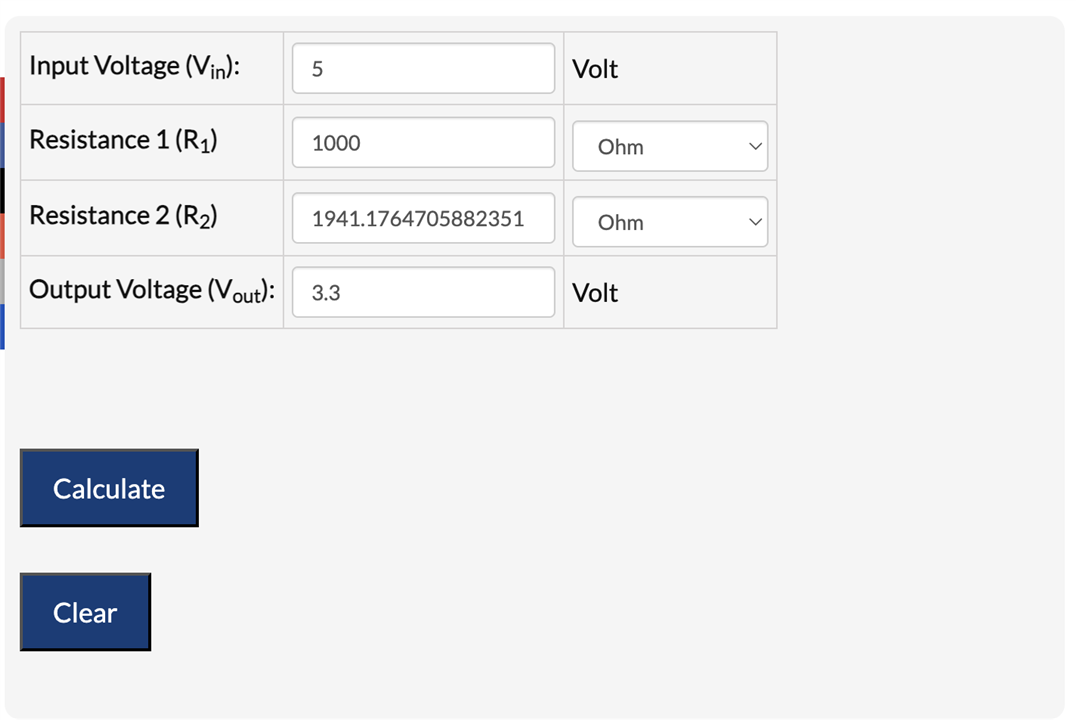Hi i am a completely new to electronics so please be gentle.
I just got an arduino uno board and a GSM module called sim800A. I came to know that I should power the GSM module with 4.2V, but Arduino only provides 3.3V and 5V as power output. After looking into ways to convert 5V to 4.2V I came to know that i can use a voltage divider circuit.
Now I understand how a voltage divider circuit works. So i need to connect two resistors to 5V of Arduino to get 4.2V. I am using this below voltage divider calculator to calculate the values of my resistor.
circuitdigest.com/.../voltage-divider-calculator
I have kept the Vin voltage as 5V that i will get from Arduino and output voltage as 4.2V. I already have 1000 ohms (1k ohms) so i am using that for R1 now the result is like this

It is telling me to use 1941 ohms for R2, but there is no resistor with that value. I tired changing the value of R1 and calculate again. But still i am not getting whole numbers value for R2. Can some one help me what i should do here. I am very far from local electronic market so don't have much resistor values with me.


